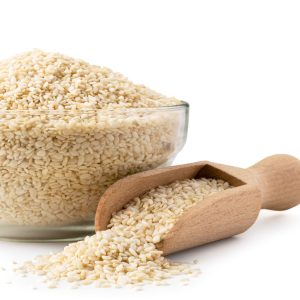Mangoes
Mangoes are a tropical delight that brings vibrant flavor and natural sweetness to any dish. Known as the “king of fruits,” mangoes boast a rich history and unique, juicy taste, making them a favorite worldwide.
Whether enjoyed fresh, blended into smoothies, or used in savory dishes, mangoes are a versatile ingredient that add both color and nutrition. These golden fruits are packed with vitamins, antioxidants, and fiber, making them as healthy as they are delicious.
In this post, we’ll explore the many varieties of mangoes, give tips on selecting the perfect one, and suggest creative ways to incorporate them into your meals. Get ready to discover why mangoes are more than just a summer treat—they’re a year-round indulgence worth savoring.
More About Then
Mangoes originate from South Asia but have since spread globally, thriving in tropical and subtropical climates. These fruits grow on trees that can reach up to 100 feet tall, producing large, oval-shaped fruit with smooth, leathery skin that ranges from green to yellow to deep red as it ripens.
Inside, mangoes have a large, flat pit surrounded by juicy, sweet, and slightly tangy flesh. The flesh has a unique texture, smooth and buttery, with a flavor that can vary slightly between varieties—some offering notes of peach or citrus, others resembling a hint of pineapple or melon.
Mangoes come in many varieties, each with a distinct flavor, texture, and color. Some of the most popular types include the Ataulfo, Haden, and Tommy Atkins. They are not only a treat for the taste buds but also a powerhouse of nutrients, providing high levels of vitamin C, vitamin A, and fiber.
Mangoes are a great addition to smoothies, salsas, salads, and desserts or can be enjoyed fresh. Their versatility and health benefits make them an essential fruit in kitchens worldwide.
Can You Eat Mango Skin?
You can technically eat the skin of a mango, but most people choose not to. The skin’s tough texture and bitter taste make it less appealing to many. Additionally, mango skins contain urushiol, a chemical compound also found in poison ivy. Consuming urushiol in large amounts can cause skin irritation in some people.
If you decide to eat the skin, wash the mango thoroughly to remove any pesticides or residues. However, peeling the mango before eating the flesh is more common to avoid bitterness and potential irritation. The flesh, with its sweet and juicy texture, is the main part of the mango that people enjoy.
How To Pick A Good Mango at the Market
Mangoes offer an incredibly sweet taste and soft texture, but you must eat them at the right time. Unripe mangoes feel tough and taste bland. To check if a mango is ripe, try the “squeeze test.”
When you gently squeeze the mango, if it feels rock-hard, leave it on the counter for a day or two to soften. Be careful not to let it become too squishy, though—ripe mangoes still retain some firmness.
When shopping for mangoes, consider the color, size, firmness, and any blemishes on the skin. If the mango’s skin is green, it’s probably unripe. Look for mangoes that are golden orange or dark yellow. Larger mangoes typically have more fruit around the stone, so choose those that are a bit bigger. The smell is another good indicator of ripeness: a sweet, fruity aroma signals that the mango is ready to eat.
You can also buy unripe mangoes and let them ripen in your pantry. To preserve a ripe mango, place it in the refrigerator’s crisper to keep it fresh longer.
What To Eat Them With
Mangoes shine in the summertime when they’re in season, adding a delicious touch to desserts, smoothies, salads, and salsas. You can enjoy mango on its own or dice it up to enhance other dishes.
Try blending a mango into a smoothie, skewering it on a kabob, pairing it with yogurt, grilling it, or slicing it to make a fresh mango salsa or chutney.
To make a tasty salsa, check your fridge for ingredients that pair well with mango, and experiment to find the perfect combination of flavors. Just be careful not to overwhelm the dish with too much mango—it’s a very sweet fruit, so you only need a small amount to complement the meal.
Because of their natural sweetness, mangoes often appear in spicy salsas or paired with chili powder, creating a zesty-sugary balance that elevates the dish.
















4 Responses
I love mangoes and i use them for fresh juice and in stir fried beef.We in Kenya pluck them from trees thats jow blessed we are.
So if you are ever in India or have anyone heading your way from India towards the end of the mango season, ask them to get you Badami, Langda, Chausa and Pairee. These are the lesser known varieties… alphonso is the most popular one and the one that’s exported. However, I find these other varieties to be more flavourful and each one has a very distinct taste.
I pair mango with blackberries or blueberries (which are beautiful together) and a soft cheese such as Havarti or similar, with rose` or red wine. Also use it to make dressing by cubing it finely then mashing with a wide flat blade or blending after cubing. Dressing components that are tasty are grated ginger, lime juice and some heat from hot red pepper for color. Temper with pink salt, add some sweet almond oil if you wish and preserve with rum. Keeps in refrigerator for quite a while, if you can keep the family out of it. 🙂
Aamwalla is an Indian e-commerce company which sells superior quality of alphonso mangoes online to consumers right from their Devgad farms. Their USP is organic alphonso mangoes.